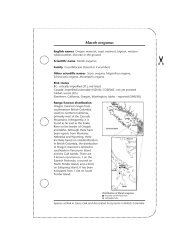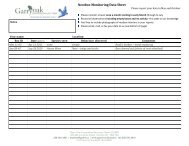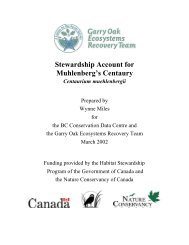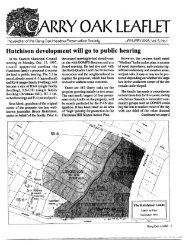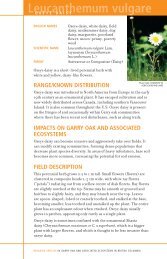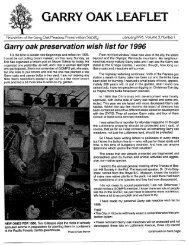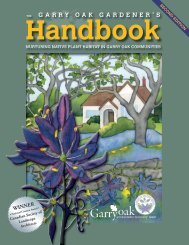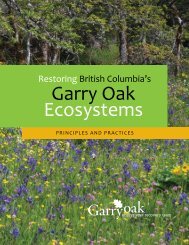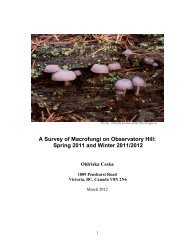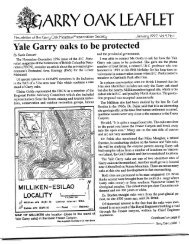PDF 320KB - Garry Oak Ecosystems Recovery Team
PDF 320KB - Garry Oak Ecosystems Recovery Team
PDF 320KB - Garry Oak Ecosystems Recovery Team
You also want an ePaper? Increase the reach of your titles
YUMPU automatically turns print PDFs into web optimized ePapers that Google loves.
PLANT-MEDIATED IMPACT OF AN INVASIVE OAK-<br />
GALL WASP ON A NATIVE SPECIALIST<br />
BUTTERFLY: ERYNNIS PROPERTIUS<br />
Kirsten M. Prior and Jessica J. Hellman<br />
University of Notre Dame<br />
A foliar gall-forming wasp, Neuroterus saltatorius, was recently<br />
introduced on to Vancouver Island, British Columbia. In its native<br />
range it occurs at low, non-damaging, levels on its host plant, <strong>Garry</strong><br />
oak (Quercus garryana). In its introduced range, however, it occurs<br />
at much higher densities where it may have substantial impacts on Q.<br />
garryana and associated species, such as the threatened oakspecialist,<br />
the propertius duskywing (Erynnis propertius). Gallformers<br />
can manipulate their host plants in several ways. They can<br />
assimilate nutrients such as nitrogen from plant tissue into their<br />
inner nutritive gall tissue. Also, they can increase the metabolism of<br />
phenols such as tannins and lignin that they concentrate in their<br />
outer protective gall tissue. Despite their ability to manipulate their<br />
host plants, the role of gall-formers as competitors is relatively<br />
unknown. Caterpillars of E. propertius occur on oak leaves<br />
contemporaneously with N. saltatorius galls. We predicted that this<br />
invasive gall-former affects this native butterfly by altering the foliar<br />
quality of oak leaves that caterpillars feed on. In the gall-former’s<br />
introduced range, we stocked enclosures with caterpillars on trees<br />
that varied in gall-former density. Biomass production of butterflies<br />
was lower in enclosures on high-density than on low-density trees<br />
because over-wintering caterpillars were smaller and fewer of them<br />
enclosed into adults the following spring. To see if N. saltatorius<br />
induced changes in foliar quality, we measured host plant quality<br />
before and after gall induction on 30 trees each at two sites<br />
(Government House and Cowichan Preserve). We found a positive<br />
relationship between gall-former density and the percent change in<br />
foliar C:N, a negative relationship between gall-former density and<br />
the percent change in foliar water at Cowichan, and no relationship<br />
between the percent change in protein-binding capacity (i.e.,<br />
phenolics) and gall-former density. Additionally, there was a negative<br />
relationship between foliar nutritional quality and butterfly<br />
performance. Our results provide evidence for a plant-mediated<br />
<strong>Garry</strong> <strong>Oak</strong> <strong>Ecosystems</strong> <strong>Recovery</strong> <strong>Team</strong> – Research Colloquium 2010 Page 14




